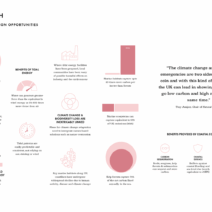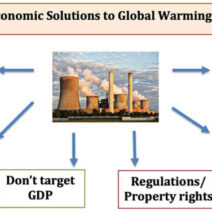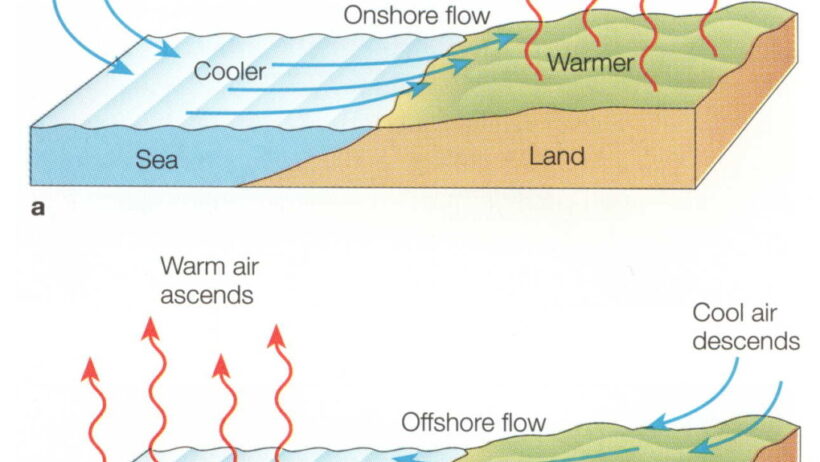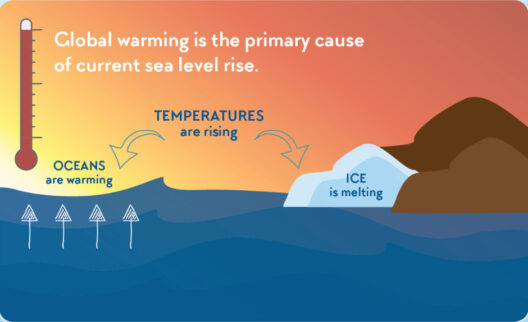Climate change, a pressing global issue, manifests itself in myriad ways, severely disrupting the food chain and compelling us to reconsider the very foundation of food security. The intricate web connecting agricultural practices, food production, and ecosystem health faces unprecedented challenges as temperatures rise, precipitation patterns change, and extreme weather events become increasingly common. This article delves into the impact of climate change on the food chain, highlighting its cascading effects from farm to famine.
The relationship between climate change and agriculture is profoundly intricate. Agriculture, while responsible for feeding the burgeoning global population, is also a significant contributor to greenhouse gas emissions. As the climate warms, crops grow under new constraints. Not only do varying temperatures affect plant physiology, but they also exacerbate pest and weed proliferation. Higher carbon dioxide (CO2) levels can stimulate weed growth, thereby intensifying competition for nutrients and water among crops. This escalating competition can lead to reduced yields and lower food quality, thwarting efforts to alleviate hunger.
One of the most immediate consequences of climate change is the alteration of weather patterns. Regions that traditionally experienced stable climate conditions are now facing erratic rainfall and increasingly severe droughts. For instance, prolonged dry spells in regions such as sub-Saharan Africa and parts of the United States have led to catastrophic crop failures. In such scenarios, staple crops like maize and wheat cannot thrive, leading to diminished harvests and soaring prices that push vulnerable populations deeper into the brink of famine.
Moreover, flooding—often an underestimated consequence of climate change—poses a dual threat: it destroys crops and contaminates soil. The inundation of arable land not only reduces agricultural output but also disrupts the supply chain, causing immediate food shortages. Flooded regions can turn fertile soils into saline wastelands, making them inhospitable for future crops. Furthermore, climate-induced disruptions to transportation routes hinder the ability to distribute food, exacerbating the effects of local crop failures.
In addition to these direct effects, climate change alters agricultural zones, compelling farmers to adapt or relocate. The shifting conditions may render traditionally productive farming areas less hospitable, prompting a migration toward cooler climates or higher altitudes. Such shifts pose significant socio-economic challenges, especially for smallholder farmers who may lack the resources to transition effectively. The potential for conflict arises as communities vie for limited arable land, further complicating the food security landscape.
Climate change also significantly influences livestock management. Rising temperatures can cause heat stress in animals, leading to decreased productivity and increased mortality rates. Fertility and reproduction in livestock are negatively impacted, diminishing not only meat and dairy outputs but also the livelihoods of farmers dependent on these industries. Furthermore, changing climatic conditions can alter forage quality and availability; regions that previously supported healthy pastures may become drought-stricken, compelling ranchers to invest in costly feed alternatives to sustain their herds.
If the conditions for agriculture and livestock prove unfavorable, the implications for food systems extend beyond the farm gates. Food processing and storage are precariously affected by climate variability also. Higher temperatures can accelerate spoilage, transforming fresh produce into waste long before reaching consumers. Simultaneously, energy-intensive refrigeration methods become less effective during heatwaves, contributing to food insecurity. This necessitates innovative approaches to food preservation and supply chain management.
The intricate balance of biodiversity, often touted as a buffer against climate variability, is also under siege. As climate change alters habitats, many plant and animal species struggle to adapt. The decline of pollinators, for example, presents a grave threat to food production. Crops reliant on bee populations and other pollinators face potential declines, leading to reduced yields and less diverse diets. Recognizing the importance of protecting these critical species becomes paramount for sustaining future food supplies.
In response to these challenges, innovative agricultural practices and policies are essential. Regenerative farming—an approach focused on restoring soil health and increasing biodiversity—holds promise as a means to enhance resilience against climatic stresses. Additionally, the integration of technology in agriculture, such as precision farming and the use of climate-resilient crop varieties, can mitigate some adverse effects of climate change. Collaborative efforts among governments, NGOs, and the private sector are vital. These stakeholders must prioritize funding and education to bolster the adaptive capacity of farmers worldwide.
The urgency of addressing climate change impacts on the food chain cannot be overstated. Global interventions—ranging from policy reform to grassroots initiatives—must prioritize food security as part of a holistic response to climate change. The time for action is now. Failure to adapt to the realities of a warming planet will not only jeopardize the livelihoods of millions but could trigger a widespread humanitarian crisis marked by famine and deprivation.
Ultimately, recognizing the complexities of the food chain in the context of climate change is essential for ensuring food security for future generations. Our collective responsibility lies in forging a sustainable path—one that nurtures both the environment and the diverse populations reliant upon it. Addressing climate change is not merely an environmental concern; it is an imperative that intersects with health, equity, and survival.




